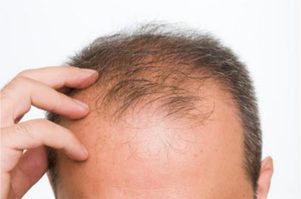
The life cycle of a hair is divided into 3 phases:
Anagen – This is when the hair is growing, and usually lasts between 2 and 6 years.
Catagen – This is a transitional phase and lasts between 2 and 3 weeks.
Telogen – At this point the hair rests for about 2 to 3 months. The hair is then shed and the process begins anew.
As we grow older the rate of hair growth slows. Eventually, the ratio of new hair growth to existing hair loss (anagen to telegen) favors the hair loss and we begin to see the effects visually. The gradual thinning of hair with age (as described above) is called involutional alopecia.
Androgenic alopecia, commonly known as male pattern baldness, is what most people suffer from when they experience premature hair loss. This condition is one of genetic predisposition, and although it affects mainly men, women can, to a lesser degree, be affected. The onset of androgenic alopecia can begin in the late teens and 20s for men, but often not until the 40s for women.
Sudden hair loss in children and young adults is called alopecia areata. This condition results in complete baldness, but in about 90% of cases the hair returns in a year or two.
Alopecia universalis, as the name would suggest, results in complete hair loss.
